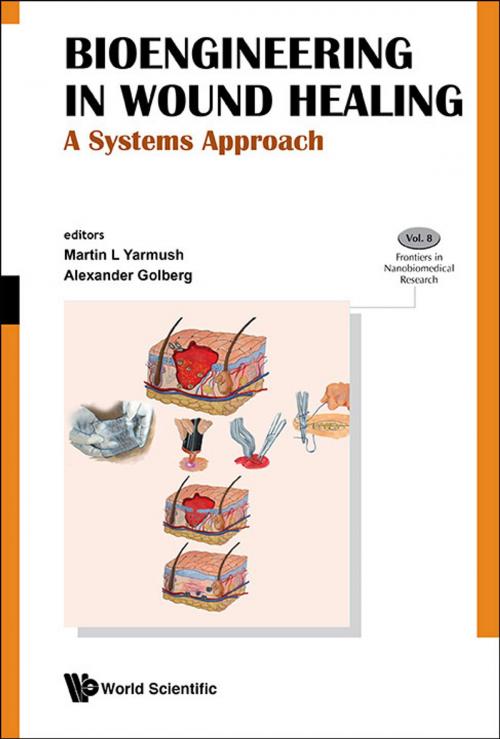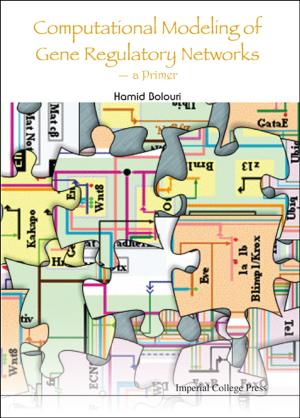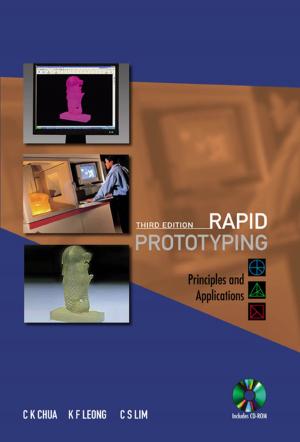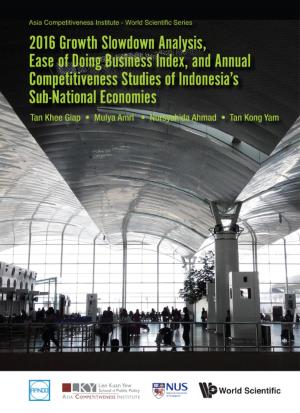Bioengineering in Wound Healing
A Systems Approach
Nonfiction, Health & Well Being, Medical, Specialties, Dermatology, Science & Nature, Technology, Engineering| Author: | Martin L Yarmush, Alexander Golberg | ISBN: | 9789813144590 |
| Publisher: | World Scientific Publishing Company | Publication: | March 24, 2017 |
| Imprint: | WSPC | Language: | English |
| Author: | Martin L Yarmush, Alexander Golberg |
| ISBN: | 9789813144590 |
| Publisher: | World Scientific Publishing Company |
| Publication: | March 24, 2017 |
| Imprint: | WSPC |
| Language: | English |
What is a wound, how does it heal, and how can we prevent scarring? The concept of wound healing has puzzled humans even before the advent of modern medicine.
In recent years, bioengineering has tackled the problems of cancer, tissue engineering and molecular manufacturing. The broad spectrum of technologies developed in these fields could potentially transform the wound care practice. However, entering the world of wound healing research is challenging — a broad spectrum of knowledge is required to understand wounds and improve healing.
This book provides an essential introduction of the field of wound healing to bioengineers and scientists outside the field of medicine. Written by leading researchers from various fields, this book is a comprehensive primer that gives readers a holistic understanding of the field of wound biology, diagnostics and treatment technologies.
Contents:
- Scarless Tissue Regeneration (Alexander Golberg)
- Anatomy of the Human Skin and Wound Healing (Amit Sharma, Labib R Zakka and Martin C Mihm Jr)
- Deprived and Enriched Environments: How Sensory Stimulation Affects Wound Healing (Jonathan G Fricchione and John B Levine)
- Models of Ischemic and Vascular Wounds (Michael T Watkins and Hassan Albadawi)
- Developmental Biology of Skin Wound Healing: On Pathways and Genes Controlling Regeneration Versus Scarring (Sarah Susan Kelangi and Marianna Bei)
- Nutrition, Metabolism, and Wound Healing Process (Yong-Ming Yu and Alan J Fischman)
- Polarization Sensitive Optical Coherence Tomography for Imaging of Wound Repair (Martin Villiger and Brett E Bouma)
- Functional Imaging of Wound Metabolism (Jake Jones, Vasily Belov and Kyle P Quinn)
- Functional Skin Substitutes — The Intersection of Tissue Engineering and Biomaterials (Kevin Dooley, Julie Devalliere and Basak Uygun)
- Biomaterial-Based Systems for Pharmacologic Treatment of Wound Repair (Mara A Pop, Julia B Sun and Benjamin D Almquist)
- Laser Tissue Welding in Wound Healing and Surgical Repair (Russell Urie, Tanner Flake and Kaushal Rege)
- Bioprinting for Wound Healing Applications (Aleksander Skardal, Sean Murphy, Anthony Atala and Shay Soker)
- Electroporation Applications in Wound Healing (Laure Gibot, Tadej Kotnik and Alexander Golberg)
Readership: Bioengineers, scientists, researchers and graduate students outside the field of medicine.
Key Features:
- Comprehensive coverage of wound healing for bioengineers and scientists
- Contributors are leaders in wound healing research and technology
- First-of-its-kind: An introductory book on wound healing for bioengineers
- Multidisciplinary approach: Covers topics on medicine, biology, psychology, and engineering
What is a wound, how does it heal, and how can we prevent scarring? The concept of wound healing has puzzled humans even before the advent of modern medicine.
In recent years, bioengineering has tackled the problems of cancer, tissue engineering and molecular manufacturing. The broad spectrum of technologies developed in these fields could potentially transform the wound care practice. However, entering the world of wound healing research is challenging — a broad spectrum of knowledge is required to understand wounds and improve healing.
This book provides an essential introduction of the field of wound healing to bioengineers and scientists outside the field of medicine. Written by leading researchers from various fields, this book is a comprehensive primer that gives readers a holistic understanding of the field of wound biology, diagnostics and treatment technologies.
Contents:
- Scarless Tissue Regeneration (Alexander Golberg)
- Anatomy of the Human Skin and Wound Healing (Amit Sharma, Labib R Zakka and Martin C Mihm Jr)
- Deprived and Enriched Environments: How Sensory Stimulation Affects Wound Healing (Jonathan G Fricchione and John B Levine)
- Models of Ischemic and Vascular Wounds (Michael T Watkins and Hassan Albadawi)
- Developmental Biology of Skin Wound Healing: On Pathways and Genes Controlling Regeneration Versus Scarring (Sarah Susan Kelangi and Marianna Bei)
- Nutrition, Metabolism, and Wound Healing Process (Yong-Ming Yu and Alan J Fischman)
- Polarization Sensitive Optical Coherence Tomography for Imaging of Wound Repair (Martin Villiger and Brett E Bouma)
- Functional Imaging of Wound Metabolism (Jake Jones, Vasily Belov and Kyle P Quinn)
- Functional Skin Substitutes — The Intersection of Tissue Engineering and Biomaterials (Kevin Dooley, Julie Devalliere and Basak Uygun)
- Biomaterial-Based Systems for Pharmacologic Treatment of Wound Repair (Mara A Pop, Julia B Sun and Benjamin D Almquist)
- Laser Tissue Welding in Wound Healing and Surgical Repair (Russell Urie, Tanner Flake and Kaushal Rege)
- Bioprinting for Wound Healing Applications (Aleksander Skardal, Sean Murphy, Anthony Atala and Shay Soker)
- Electroporation Applications in Wound Healing (Laure Gibot, Tadej Kotnik and Alexander Golberg)
Readership: Bioengineers, scientists, researchers and graduate students outside the field of medicine.
Key Features:
- Comprehensive coverage of wound healing for bioengineers and scientists
- Contributors are leaders in wound healing research and technology
- First-of-its-kind: An introductory book on wound healing for bioengineers
- Multidisciplinary approach: Covers topics on medicine, biology, psychology, and engineering















